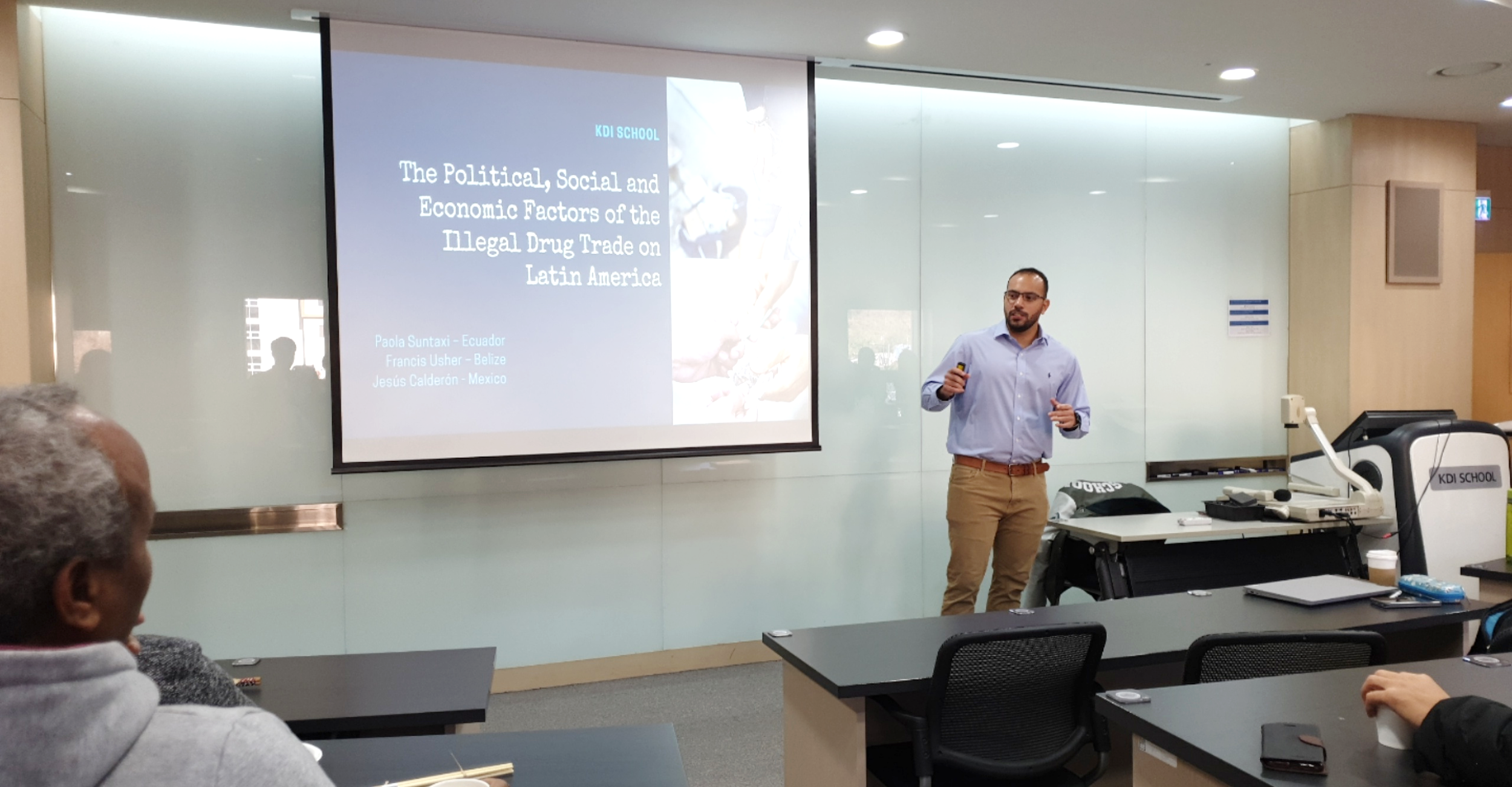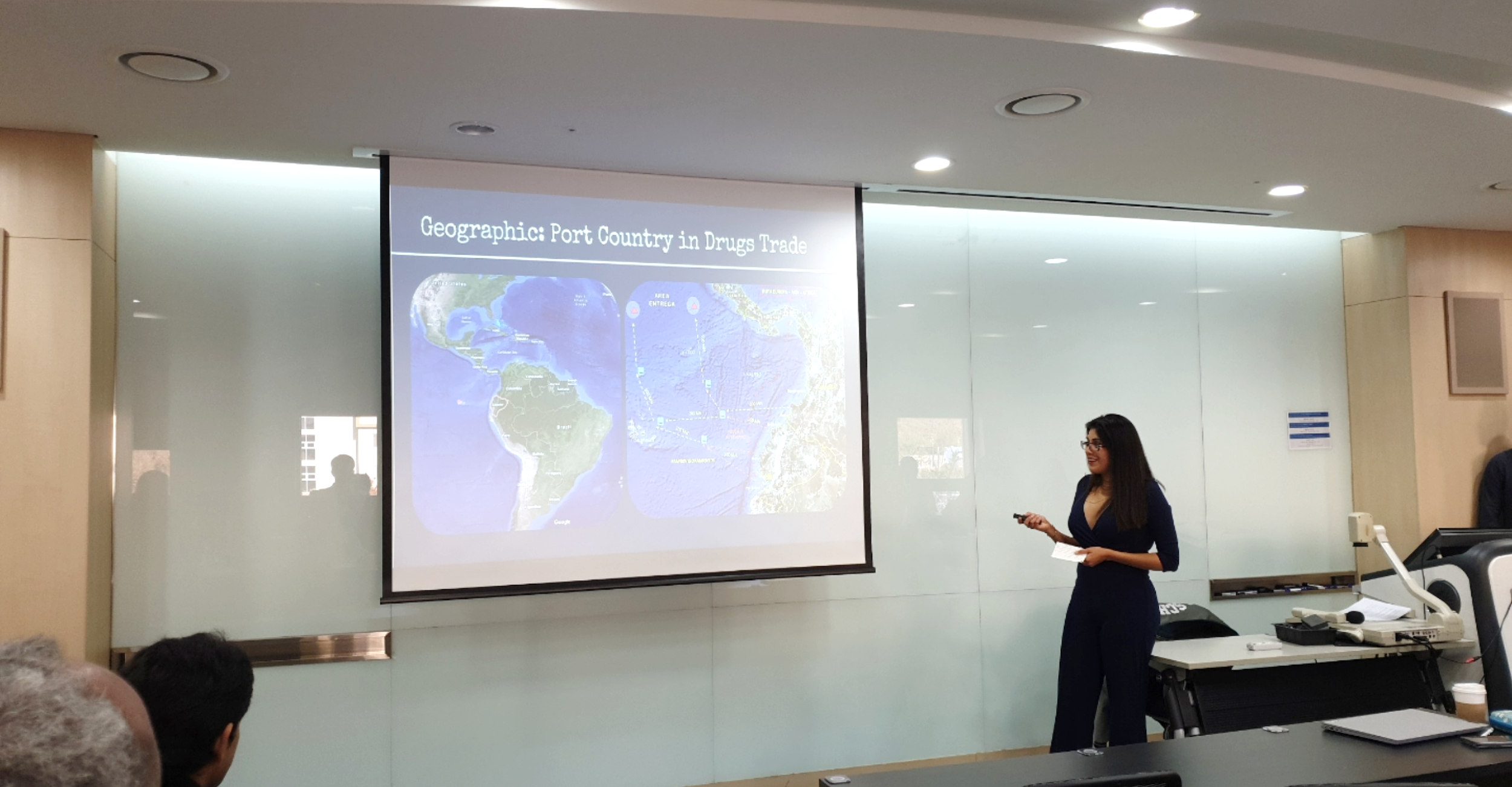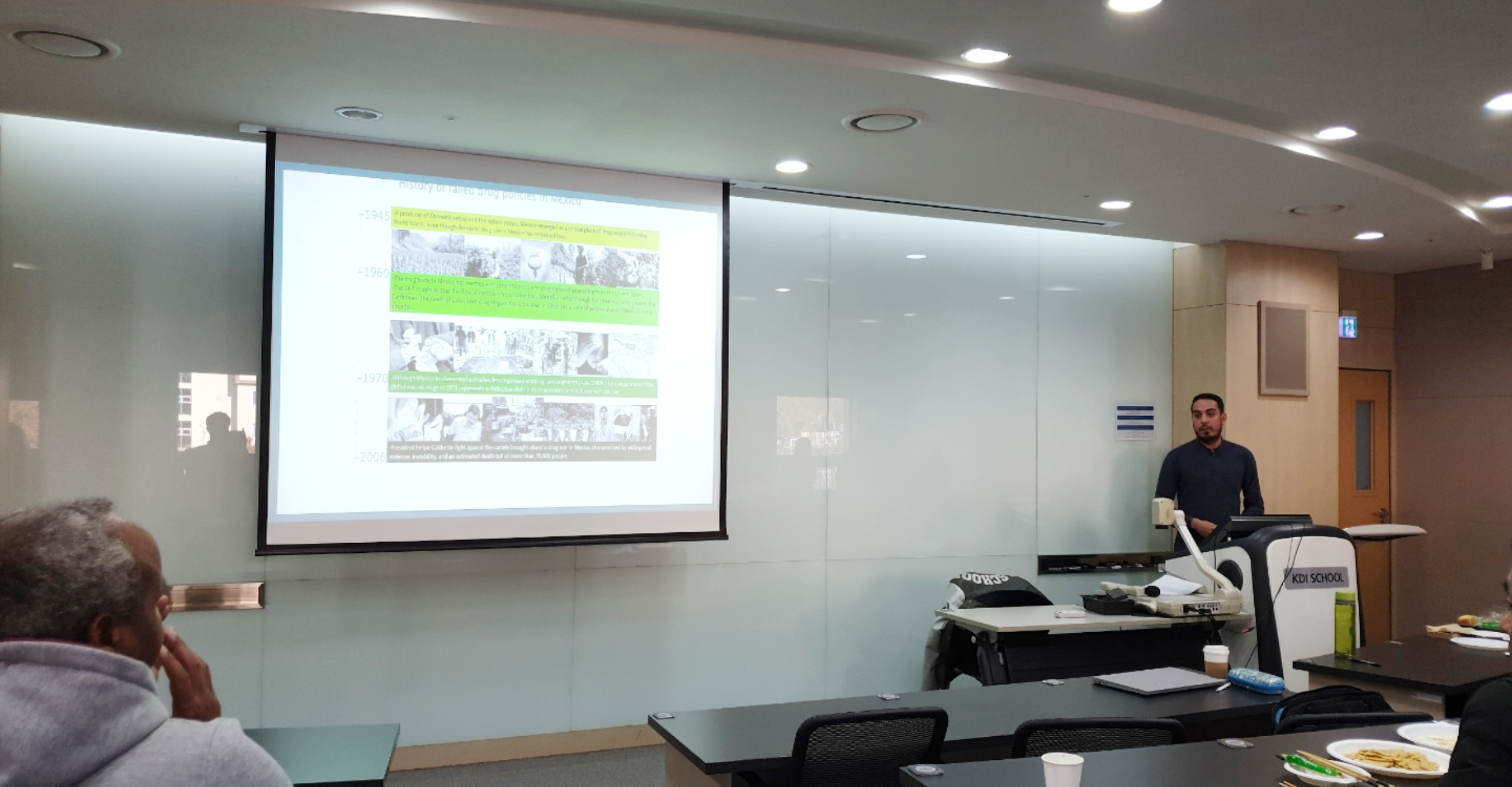
The Factors of the Illegal Drug Trade on Latin America
- Date 2019-12-16 08:08
- CategoryResearch and Education
- Hit2484

The popularity of recent Netflix series like El Chapo and Dope hints at the general public’s fascination with the world of illicit drugs. However, the real-world people and consequences that lay behind the scenes can easily go ignored. To correct this knowledge gap, the Latin American and Caribbean Forum held an enlightening seminar entitled: The Political and Social Implications of the Illegal Drug Trade on Latin America. The three speakers- Ms. Paola Suntaxi (Ecuador), Mr. Francis Usher (Belize) and Mr. Jesús Calderón (Mexico)- used their home countries as case studies to analyze the massive impact of illegal drugs, and the policies designed to stop them. From the opening of this seminar, the entire audience had a sense of the scale of the issue: four decades of the United States-led drug war, countless lives lost through associated violent crime, and all under the shadow of a drug trade worth a staggering $320 billion US dollars per year.
Latin America has a reputation as a massive producer of illicit drugs and understanding how it attained this reputation is critical to understanding the broader picture of the drug trade. In this regard, the first thing to note is the region’s climate, which lends itself well to cultivating cocaine and opiates. However, climate alone cannot explain how Latin America became a major producer. We heard the story of how in Belize, when global sugar cane prices dropped in the 1960s, in order to earn a living, farmers turned to the crops which grew the easiest and fetched the highest prices- cannabis. Similarly, in Ecuador, damaged farmlands left struggling farmers with few alternative means to support themselves and their families. Given the size of the industry, not only farmers, but workers across Latin America can find themselves offered huge amounts of money by participating in the drug trade. This influence is particularly evident in the step beyond the cultivation of drug crops: trafficking.

One of the first striking facts is that in Latin America, despite being known as a major producer and distributor of drugs, domestic consumption is relatively low. Where the drug trade has a big impact on countries like Ecuador, Belize and Mexico is through illegal trafficking. Again, the sheer resource power of drug lords is reflected in how trafficking is conducted. In Ecuador, cocaine has been found smuggled in bananas and the stems of roses. In Mexico, helicopters and even submarines have been used to smuggle drugs. And in Belize, light aircraft and speedboats are used in so-called ‘wet drops’. These hard-to-detect operations involve dropping sealed, floating packages of drugs from aircraft into bodies of water for collection and distribution. Local fishermen may be offered close to a year’s salary by traffickers for simply picking up a wet drop package and passing it on to an associate back on land. Here, as in the cultivation stage, the local people’s low socio-economic status is exploited using the incredible wealth and resources of drug traffickers.
The social harms of the drug trade on local populations are intertwined with the often militaristic responses that have long characterized political approaches to the Latin American drug trade. In Mexico, various drug cartels wage war against one another for market share, resulting in a sky-high homicide rate and other violent crimes. Furthermore, all countries see reduced legitimate prosperity due to trade blacklisting from overseas and the diversion of resources towards illicit drug production. This leads to rises in poverty, drug use and addiction within local populations and in consumer countries. From these issues sprung citizen discontent and thus pressure on governments to act. Hence the US-led ‘war on drugs’, beginning in the 1970s, that was a key influence in the militaristic and punitive approaches to drugs seen across Latin America. In Ecuador, charges for even minor drug possession is some of the harshest on the continent, and even exceeds the charges of rape. Much of law enforcement and the military’s time and resources are taken up with attempting to bust drug trafficking rings, locate illegal crops and arrest figures associated with the drug trade.

However, despite decades of fighting and huge levels of incarceration, the high level of demand and the industry itself, continues. Because of this costly failure, there are calls for countries to shift from a crime perspective to a health perspective on drugs. This entails replacing investment in prisons and the arms race against cartels with investment in rehabilitation programs for drug users and more careful consideration of the social and economic context in which drug production, trafficking and consumption occur. This transition proves difficult, however, as many consider the approach to be too soft on what is often considered a problem of ‘morality’. In some cases, politicians who have suggested the shift away from a drug war policy have even been accused of acting in collusion with cartels. Despite these challenges, as the number of lives lost climbs higher and the outpour of drugs from Latin America surges on decades after the war on drugs was declared, clearly something new is needed. This final quote from Ms. Suntaxi neatly summarises the immense difficulty inherent in finding this new avenue of change: ‘drug policy reform is really about social transformation and learning to live with diversity’. Indeed, no simple task for any society.

Related News
-
Research and Education25 days ago
Republic of Korea Economic Bulletin, April 2024#KDI #Economic #KDISCHOOL #kdischool #Economic Bulletin #Research
-
Research and Education53 days ago
Republic of Korea Economic Bulletin, March 2024#KDI #Economic #KDISCHOOL #kdischool #Economic Bulletin #Research
-
Research and Education85 days ago
Republic of Korea Economic Bulletin, February 2024#KDI #Economic #KDISCHOOL #kdischool #Economic Bulletin #Research
